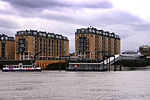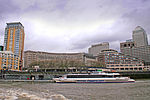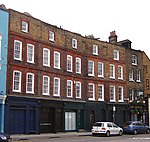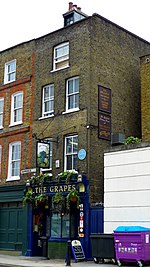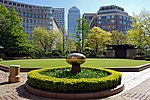Canary Wharf – Rotherhithe Ferry
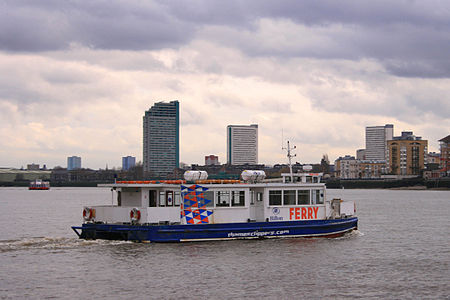
The Canary Wharf – Rotherhithe Ferry is a passenger ferry across the River Thames in the south east of London, England. The service connects Canary Wharf Pier, serving the major Canary Wharf office development north of the river, with Nelson Dock Pier at the Doubletree Docklands Hotel in Rotherhithe. Boats operate roughly every 10 minutes at peak time, or every 20 minutes off-peak time. There are service breaks between 11:03–12:05 and 20:13–21:05. Boats can be used both by guests of the hotel as well as by passengers not staying at the hotel.The service is operated by Thames Clippers, who also operate commuter boats along the river, but uses rather smaller boats.In March 2020 the service was suspended due to the Covid-related closure of the Doubletree by Hilton hotel in Rotherhithe. The service re-opened in September 2020.
Excerpt from the Wikipedia article Canary Wharf – Rotherhithe Ferry (License: CC BY-SA 3.0, Authors, Images).Canary Wharf – Rotherhithe Ferry
Durand's Wharf, London Rotherhithe (London Borough of Southwark)
Geographical coordinates (GPS) Address Nearby Places Show on map
Geographical coordinates (GPS)
| Latitude | Longitude |
|---|---|
| N 51.504642 ° | E -0.031908 ° |
Address
Nelson Dock Pier
Durand's Wharf
SE16 5UB London, Rotherhithe (London Borough of Southwark)
England, United Kingdom
Open on Google Maps
